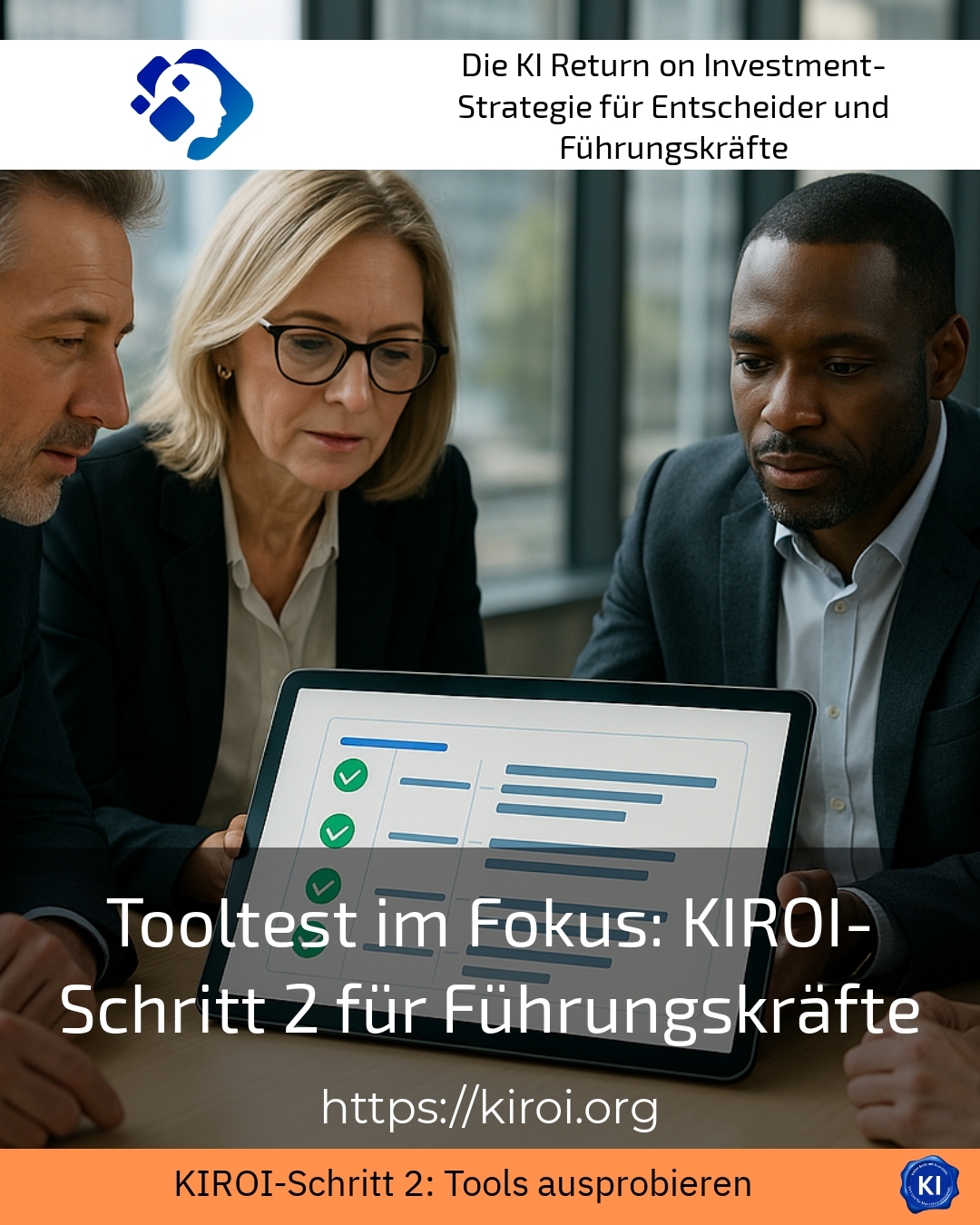In an age of constantly changing digital possibilities, tool testing is becoming increasingly important for managers. The term tool test refers to a structured procedure with which companies select suitable software solutions in a targeted manner and integrate them into their work processes. Particularly in the context of KIROI Step 2, the tool test offers a sound method for making a targeted selection and thus conserving valuable resources. Many managers report that the tool test helps them to make complex decisions more transparently and reliably.
The central role of the tool test in the KIROI process
In KIROI step 2, the tool test is a central component in the selection of software solutions. Managers are often faced with the challenge of finding the right solution from a wide range of technical tools. In the tool test, the individual requirements are first precisely recorded in order to then evaluate various tools on the basis of specific application scenarios. This not only tests the technical functionality, but also assesses how well a tool can be integrated into existing systems.
Practical examples illustrate the importance of this approach: a medium-sized company in the technical services sector tested tools for analysing the competition and found that usability and adaptability were more important than pure functions. Another example is a sales team that evaluated an AI-supported chatbot to automate customer communication. Here, the tool test showed that flexibility in adapting to specific customer enquiries was particularly important.
The focus is therefore on a holistic evaluation that also takes into account aspects such as user-friendliness and long-term maintenance. The tool test not only supports the technical selection, but also promotes acceptance within the team.
Practical tips for successful tool testing
A planned tool test is particularly beneficial if it is implemented in a structured and practical manner. Managers should define clear objectives and describe realistic use cases before the test. This allows them to specifically test how the tool addresses specific challenges, accelerates work processes or improves the basis for decision-making, for example.
In the marketing sector, for example, it is advisable to use a tool for analysing competitors and keywords in order to discover gaps and opportunities in your own strategy. HR companies choose tools that help them analyse applicant data and team structures. In customer service, the introduction of chatbots is often tested to relieve routine enquiries.
Another helpful approach is to involve end users during the testing process. By providing feedback at an early stage, adjustments can be made in a targeted manner and acceptance can be increased. Some companies report that the tool test has developed into a permanent optimisation process through continuous monitoring and iterative adaptation.
BEST PRACTICE at a customer (name concealed due to NDA agreement) A financial services provider used the tool test to evaluate software for automated data analysis. The structured approach enabled the company to reduce the complexity of the existing solution while improving the accuracy of the forecasts. The result was an increase in efficiency in decision-making and greater satisfaction within the team.
Focus on tool testing: integration and user acceptance
The success of a tool depends largely on its integration into existing processes and user acceptance. A tool test that analyses these two factors in depth leads to more sustainable results. In software development, for example, tools with an open interface architecture are favoured because they can be flexibly connected to other applications.
In the logistics sector, a tool test showed that ease of use and an intuitive user interface are crucial to gaining acceptance among employees. In production, on the other hand, a test procedure was used to test various sensor solutions. Involving users in the selection phase provided valuable feedback on practical usability.
It is also important to consider the potential for customisation. Tools that can be easily configured enable companies to react flexibly to changing requirements.
My analysis
As part of KIROI Step 2, the tool test is an indispensable instrument for managers who want to actively shape digital change in their organisation. It not only provides a sound basis for the selection of suitable solutions, but also promotes the involvement of users and thus facilitates sustainable implementation. Experience reports from various industries show that a well-planned and accompanied tool test brings decisive advantages and often sets positive impulses for the entire company development.
Further links from the text above:
KIROI step 2: Unleash AI potential with the tool test
Tool testing - how leaders find the best AI tools
10 effective AI tools for executives and HR managers
For more information and if you have any questions, please contact Contact us or read more blog posts on the topic Artificial intelligence here.















